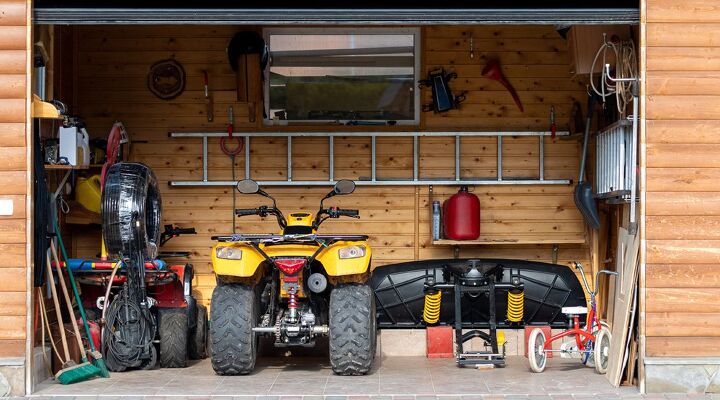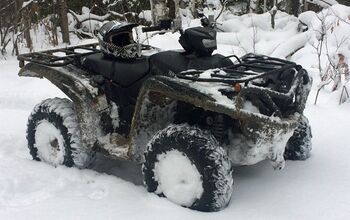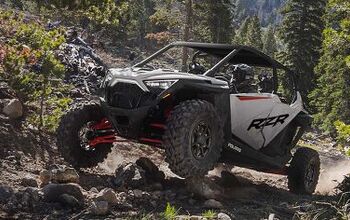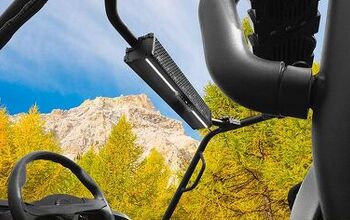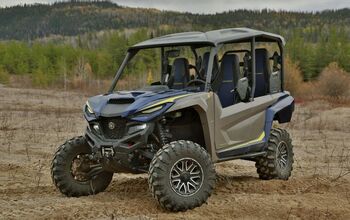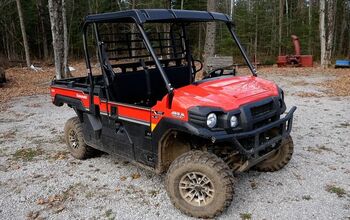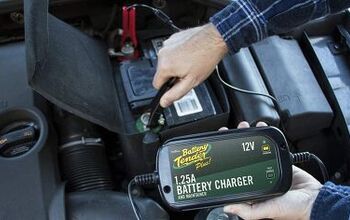Winter ATV Battery Care Tips
Winter is coming — and that means prepping your ATV for the cold. Cold temperatures can be particularly damaging to your ATV batteries, and it’s even worse if you let your machine sit idle. Some hard-core snow enthusiasts hit the trail regardless of subzero temperatures, but other riders won’t venture out until spring. Either way, it’s essential to follow these winter ATV battery care tips to make your next ride stress-free.
Lead photo by Nikola Stanisic/Shutterstock.com
Photo by Gorlov-KV/Shutterstock.com
If you don’t plan on riding your ATV this winter, you’ll need to find somewhere to store it. Even in winter, harsh UV-rays can cause damage to the finish and tires, so you’ll need to protect it from the elements. A dry, climate-controlled location, such as a garage, is optimal.
If climate control isn’t an option, opt for a dry, covered location like a shed or barn.
Clean your ATV thoroughly before long-term storage. You will also want to protect it with a breathable cover to prevent rust, dust, and corrosion from damaging your vehicle.
Battery Storage
If you’re putting your ATV into long-term storage, you’ll need to disconnect the battery from your ATV. This prevents drainage from dark currents of any electronic device on your ATV. If you have a conventional battery, it’s a good time to check the water levels. Top off your battery with distilled water before winter storage. Don’t use tap water, as it can result in the buildup of minerals in the battery and cause a shortage.
Disconnecting the battery also gives you the opportunity to clean any corroded battery terminals. Scrub the terminals with a wire brush and a mixture of baking soda and water. Once clean, wipe down any excess from the terminals with a cloth and allow them to dry completely.
If your ATV storage area isn’t climate controlled, you’ll need to store the battery separately. The biggest concern is, freezing temperatures can cause cracked cases and buckled plates. Recommended storage temperature for an ATV battery is 32 – 60°F, to extend its life.
Unused vehicle batteries are subject to discharge when they sit. This is called self-discharge. So, along with keeping your battery in an appropriate storage area, use a battery maintainer to keep it charged to keep it functional. Many battery maintainers feature automatic maintenance modes that prevent overcharging. The maintainer will sense when your battery power begins to fall and will trickle power to maintain the charge levels.
Photo by diy13/Shutterstock.com
If you plan to spend as much of the winter riding as you can, you’ll still need to do some preparation for the cold weather. And there’s always the possibility that a blizzard will force you indoors, leaving your ATV sitting unused.
During the worst weather, you’ll want to store your vehicle somewhere dry to prevent rust and corrosion. Use a weatherproof cover to prevent damage from the sun and snow, and park it in a shed or garage when not in use.
Battery maintenance
Cold temperatures can affect your ATV battery even if you ride it frequently. When putting your ATV away after a ride, remove the battery if temperatures are forecast to dip below freezing. You’ll need to store the battery somewhere protected from the cold.
If you choose not to use a maintainer, you will still need to check the battery and provide a maintenance charge at least every 3 months during the winter. Many newer ATVs are affected by a dark current draw, which means they still pull current from the battery, even when the vehicle is turned off.
Even AGM batteries will require a maintenance charge to keep your ATV drivable through the winter months.
Yuasa’s line of automatic battery chargers and maintainers can be used while the battery is installed or in storage. Best of all, some models feature defective battery detection so you’ll know when it’s time to replace the battery.
They also feature an automatic maintenance mode that kicks in once the battery reaches peak voltage. That way, your ATV will be ready to ride at a moment’s notice.
Riding in the snow can be a blast, but not so much when your vehicle won’t start or fails in an inconvenient location. While high heat could shorten your ATV battery life, extreme cold might be even worse because it could cause battery cracking and weaken the battery power. Make sure you’re prepared to hit the trails by following these basic winter ATV battery care tips.
More by Sponsored Post




